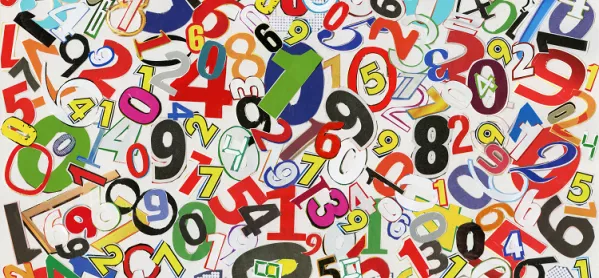I remember, with frustration, my first year of teaching odd and even numbers.
It was a Year 2 class.
“Just look at the pattern. Can’t you see it!” I remember myself saying with growing annoyance.
It was not the best approach, I have to admit.
Teaching odds and evens
My LSA stepped in to suggest using a rhyme to help the pupils. It went something like: “0,2,4, 6 and 8 are even numbers at the gate; 1, 3, 5, 7 and 9 are all odd and out of time”.
Now, I obviously thanked her and was pleased when I saw the children reciting this rhyme and sorting these numbers into odd and even. I continued to use this during my time in Year 2 thinking, “Yes, I’ve cracked teaching that objective. Thanks, Mrs Lomax!”
But I hadn’t. I’d just found another cheat for the children instead of providing them with the understanding.
We do this too much in maths: expecting children to believe rather than prove something. As reasoning is a clear objective of our maths national curriculum, it should be the children noticing why a number is even and why a number is odd and developing their own proof. Not just, “Look at the pattern!”
So how would I teach this now?
A reasoned approach
My starting point as always is concrete objectives. Using counters or cubes and 10 frames, I ask the children to create even numbers and ask if they notice anything about them, drawing out the fact that each even number can be divided equally into two parts.
Once this definition has been established, I ask: can they prove it with other numbers?
The next stage would be asking: so if that makes them even, what makes an odd number odd?
Get them to hypothesise, test and prove again using ten frames and counters. This will lead to the children noticing for themselves that odd numbers don’t divide by two equally. They now have a mathematical definition and understanding, rather than a rule to just follow.
You can emphasise the point using cubes - here they will have a very visual representation of when a number is even or odd.
Each time this is revisited the children should be reminded of the definition they found.
Next steps
This is then a building block to move into prove other things on maths. For example, that addition of even numbers equals an even. An argument which is summarised by Daniel Tammet in Thinking In Numbers as follows:
Preposition: even numbers (of any quantity) added together make an even number
Clarification: since even numbers have half parts, their sum will also have a half part
Axiom: an even number is that which is divisible into two equal parts
Conclusion: therefore the sum of any quantity of even numbers is even
Since using this method, the children have a greater understanding of the concept - rather than a quick fix.
Although I still use Mrs Lomax’s chant (I just like it).
Kevin O’Brien is a Year 6 teacher and SLT member in St Helens
Want to keep up with the latest education news and opinion? Follow Tes on Twitter and Instagram, and like Tes on Facebook





